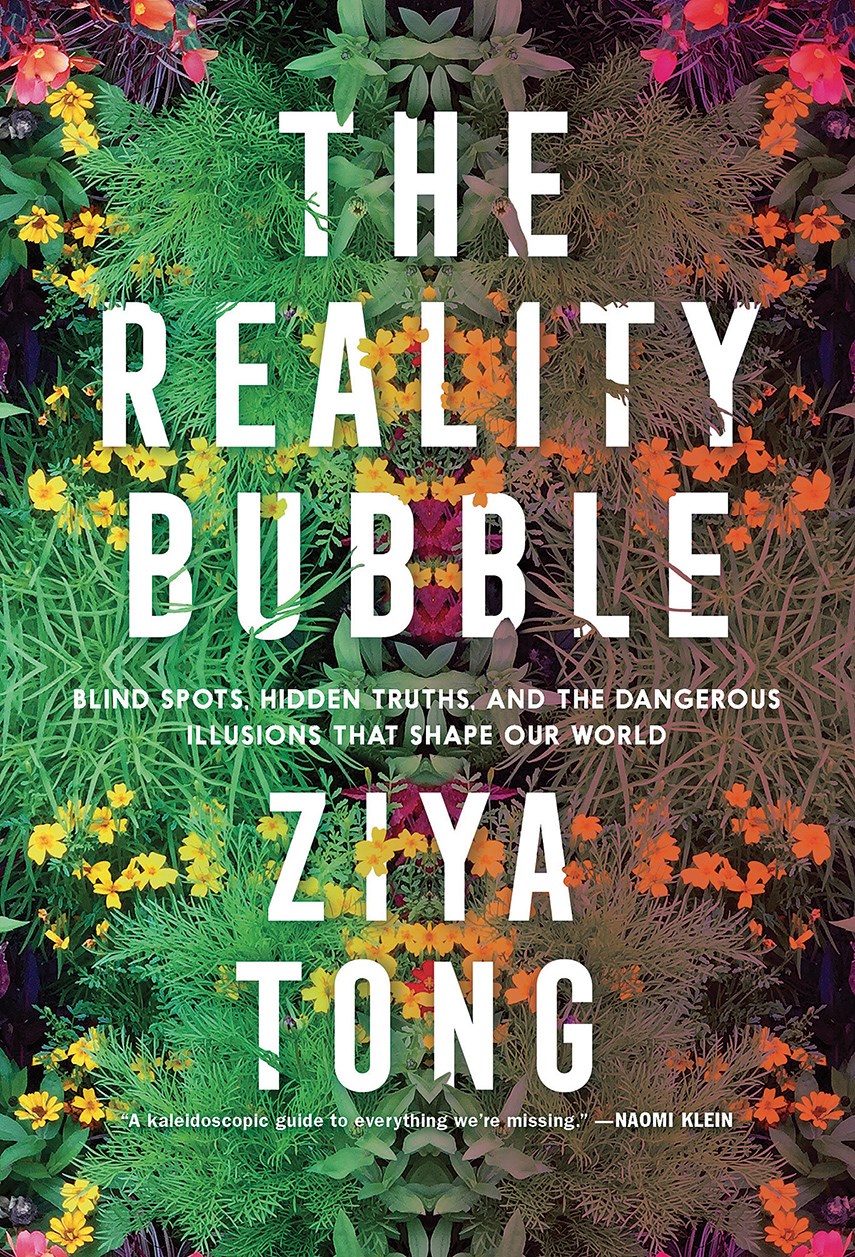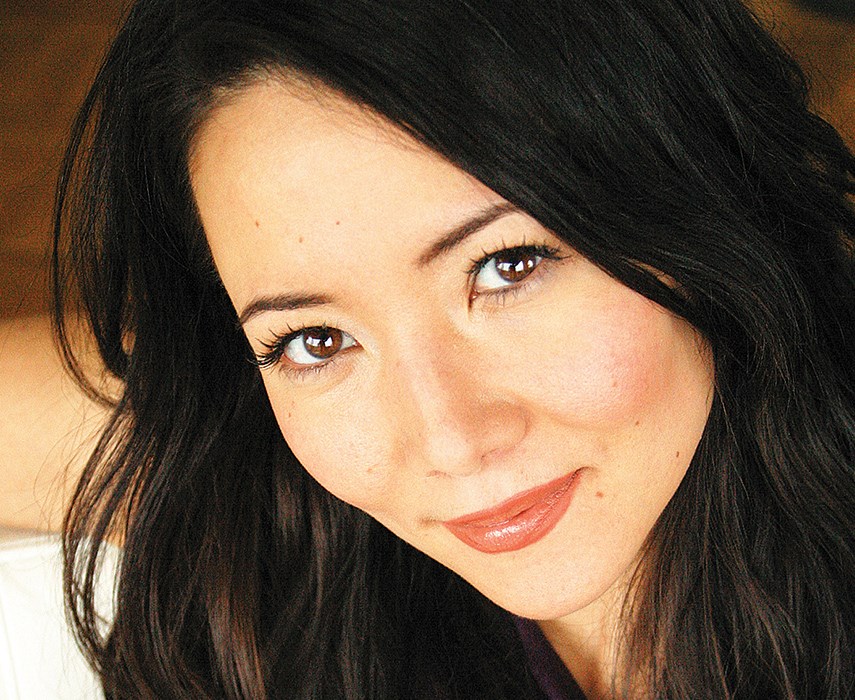CapU Speaker Series: Science journalist and broadcaster Ziya Tong in Conversation with Green Party leader Elizabeth May, The BlueShore at CapU - Birch Building, Thursday, May 23, 8 p.m. Tickets: $12/$10 (tickets.capilanou.ca/TheatreManager/1/login&event=0).
“The relation between what we see and what we know is never settled.” – John Berger, Ways of Seeing
Science journalist Ziya Tong tackles a wide range of subject matter in her new book, The Reality Bubble: Blind Spots, Hidden Truths, and the Dangerous Illusions that Shape Our World, published this week by Penguin Random House Canada.
While it’s a fun read, in the sense that it’s a well-written study packed with informative research, it’s not about fun things. When you get to the part early on where Tong discusses “bottom up trophic cascade” and the collapse of complete ecosystems you know it’s not going to be all good news.
Tong, the former co-host of Discovery Channel’s long-running science news series Daily Planet, has spent years researching the book with a link to her extensive list of references available online: randomhouse.app.box.com/v/Reality-Bubble-References.
The Reality Bubble introduces readers to a highly readable scientific analysis of subatomic universes and macro worlds that are not visible to the human eye.
Tong spoke to the North Shore News earlier this week about the research that went into her new book.
North Shore News: Were there any writers or books that particularly influenced you when you were starting out in your career as a science journalist?
Ziya Tong: Many, but I’m really lucky to know a couple of people who have inspired me. The first was Jane Goodall. I went to see her give a talk and I literally got goosebumps. She was there talking about saving an entire mountain so that chimpanzees could have their habitat. That was incredibly moving. And since that time I’ve had a chance to work with Jay Ingram who’s written many books, as well as David Suzuki, who has written many books so I’ve just been very lucky in the process of being a science broadcaster and journalist that I’ve actually had the chance to interact with some of these people who are heroes.

North Shore News: What kind of research was involved in writing The Reality Bubble?
Ziya Tong: It took three times longer for me to write the proposal for the book than to actually write the book. The book took just a little over a year to write. I was working at Daily Planet through most of it but really thinking about the book took a lot longer – some of these ideas go back for 20 years. There are things that I’ve been wrestling with in my mind for a long period of time. I just kept track of a lot of different trains of thought and collected a lot of the research and information along the way until it could be something that I could synthesize but I had to have something to say in terms of writing the proposal. The synthesis, the putting together of these 10 blind spots so that they could form a bigger picture, that was probably the trickiest part of writing the entire book. Writing itself was easy by comparison.
North Shore News: Did that process differ from what you for television?
Ziya Tong: With TV, of course, this is something that is happening very rapidly. Daily Planet was on every single night, five nights a week. The news that was coming was fresh – sometimes arriving early in the morning it would be broadcast at the end of the day. It was a very quick turnaround whereas with (The Reality Bubble) it’s taking science, news and information studies and being able to weave it into a bigger narrative.
Being able to connect the dots with many different scientific fields I think that was a benefit of working on different science shows over the years.
North Shore News: The book draws on many different areas of science to describe and conceptualize The Reality Bubble.
Ziya Tong: Yes, I hope that comes across. I don’t think many of us realize how much science infiltrates our daily lives and that’s the power of the scientific lens it enables us to see a world that is invisible to the naked eye. That is what I really wanted to show. All these different sciences are seeing a world that we can’t normally observe and it’s by putting all those lenses together that you get to see through The Reality Bubble.
North Shore News: You mention connecting the dots. How did you organize the material in the book? It’s a big subject with many different layers of knowledge.
Ziya Tong: I describe the book as looking at 10 of humanity’s blind spots and I subdivided those 10 blind spots into three sections. The first section looks at our biological blind spots, and it looks at what surrounds us – the entire world around us that as human beings we’re not able to see because our eyes are basically the same biological equipment as our caveman/cavewoman ancestors in the Neolithic era. Not much has changed but with all the scientific lenses, whether its X-ray vision or the ability to see into deep outer space, there’s a whole other world around us that science is able to see.
The second section looks at our societal blind spots. There are cameras everywhere except where our food comes from, where our energy comes from and where our waste goes. How did we as a species become so powerful when we don’t even know how we survive? It’s really looking at how we sustain ourselves.
The third section is our civilizational blind spots. Here we get a chance to dig into a lot of the inherited blind spots that have been passed on through the ages because The Reality Bubble isn’t new. The Reality Bubble has been with us for a long time.
North Shore News: The book has almost a poetic view of animals and their cognitive realities that we cannot even fathom. They have alternative realities that are just as valid as our own.
Ziya Tong: Yes, that’s the thing about human exceptionalism. When we talk about species it’s almost as if we are the only species on Earth but we are just one of 8.7 million species and probably many more we are unaware of if you include bacteria. As we heard recently in the news we are about to lose a million species which is shocking and should rock everybody to their core.
A lot of the hope for this book is for people to have epiphanies, for people to be curious and to open their eyes to see an extraordinary world that appears to most of us as quite ordinary.
North Shore News: There’s a political dimension to what you discuss in your book. On May 23 you are going to be talking to Elizabeth May at Capilano University.
Ziya Tong: Science and engineering has built this environment that we live in and it absolutely has political ramifications. It will be wonderful to be with such a great thought leader Elizabeth May on May 23 – because if anybody has grappled with a lot of these issues for a long period of time I think that it is her. I think the world is waking up – there is tremendous momentum, with things like the Extinction Rebellion and the Climate Strikes, and so it’s a really wonderful time in that sense. It gives me a tremendous amount of hope.



